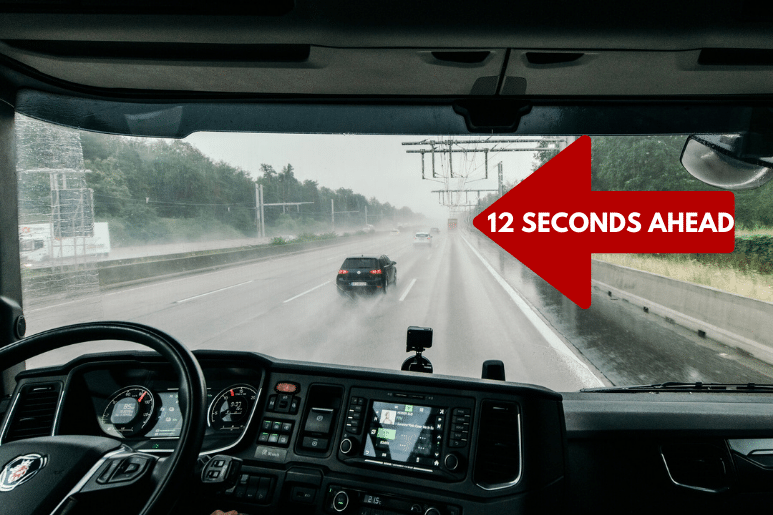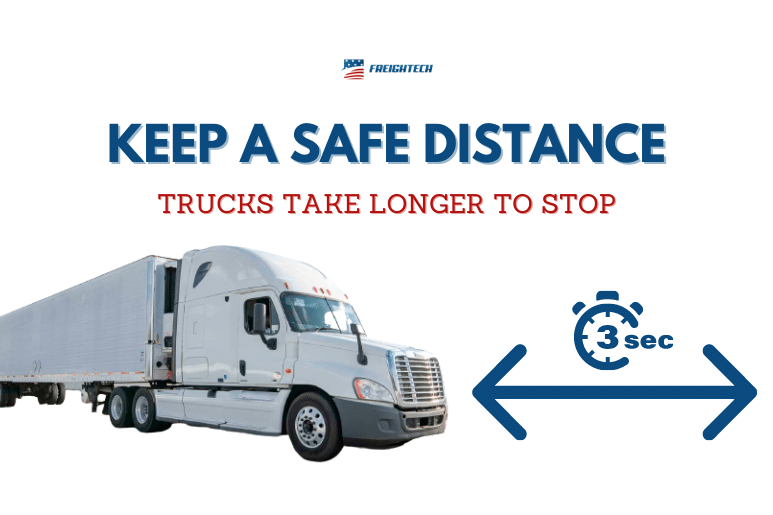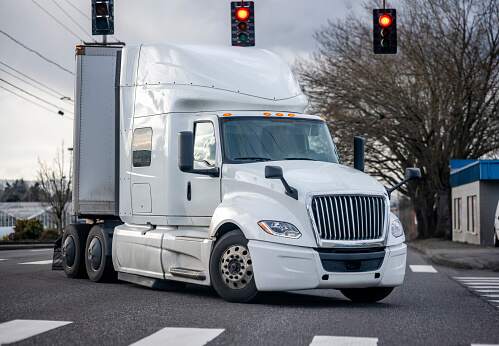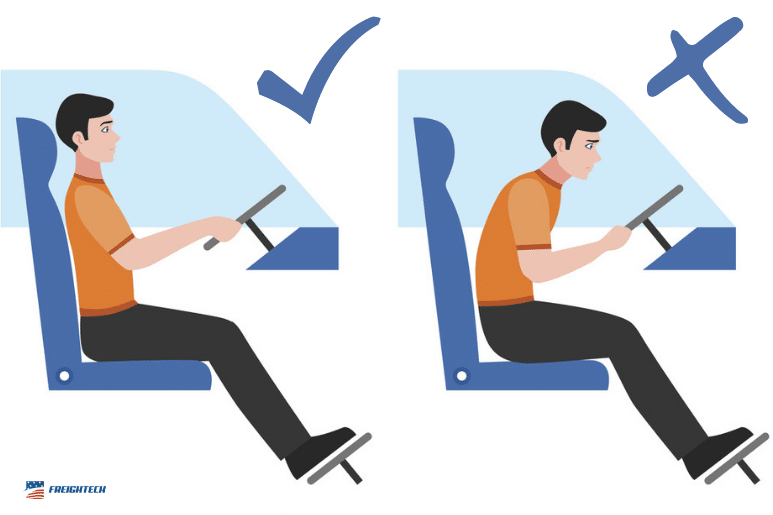Defensive Driving and Driving Techniques for Truck Drivers
Defensive driving defines driving techniques that reduce the dangers on the road despite adverse conditions or the mistakes of others.
It contains more than on-the-spot responses when being in traffic.
Definition of Defensive Driving
Defensive driving – the practice of using driving strategies that minimize risk and help avoid accidents, as by predicting hazards on the road.
It was invented in 1937 by race driver Mark Everard Pepys to reduce accidents in police pursuits.

Defensive driving techniques for truck drivers
The defensive driving technique revolves around being prepared for what other drivers might do and how the change of road conditions would affect the operation of the vehicles.
The 2 core principles that defensive driving consists of are:
➘ Creating a Buffer
➘ Driver Awareness
Most implemented driving techniques are:
➔ Scan Far Ahead
Drivers should look at least 12 to 15 seconds beyond to look out for potential hazards.
A general rule is checking 1-11⁄2 blocks in city environments and 1⁄4 mile in highway environments.
This would allow more time to see, think and act.
Sooner seeing something gives opportunity to make a good decision.
Don`t forget to look the mirrors for potentially dangerous situations that are happening from behind.
Mirrors should be checked every 3-5 seconds before and after changing the lanes.

➔ Safe distance
In defensive driving there is a simple rule that helps drivers understand how far behind the truck should be from the car in front.
It is known as “Three second rule”.
That means according to the current speed, there should be three seconds driving time between the truck and the car in front.
The US Department of Transportation recommends to maintain at least 4 seconds of distance for commercial trucks driving up to 40mph.
For every additional 10mph of speed, add 1 second.

➔ create physical way out
Leaving enough space between the truck and the vehicle in front is one way of creating a physical way out.
Another way is to create a space either from the left or the right side of the truck.
This gives an option to maneuver out of harm`s way, either to the side of the road, or to the empty lane.

➔ Drive with appropriate speed
The appropriate speed doesn`t always implies to written speed on the road signs.
Defensive driving means adjusting the speed according to the road conditions meaning weather, visibility, traffic patterns or caring a full load or empty.
It is up to driver`s decision on how fast the commercial vehicle should be operated while taking into the consideration all the variables.

➔ road intersections
The intersections present a huge safety challenge for commercial truck drivers.
Drivers fixate their vision on the green light rather than the intersection itself.
Defensive driving trains truck driver first to check the surroundings right after the light turns green.
Also, check out on distracted pedestrians and vehicles that might run on red light.

➔ driving backwards
The most accidents occur while vehicles back up.
Defensive driving implements opportunities to avoid backing up.
If backing up is unavoidable, do it slowly to notify other for the truck`s presence.

➔ avoid road rage situations
Road raging drivers can be noticed very easily.
They tend to drive aggressively, honk many times to different drivers and drift from one lane to another.
Avoid making eye-contact with them as well as engaging their driving behavior and allow them to drive past the truck.

➔ Stay alert and focused at all times
Sometimes the road can be monotonous and the mind can wander to million other places.
To stay focused, constantly look around at other drivers and vehicles.
Try to identify their driving patterns.
Avoid distraction like repeatedly checking up the phone, eating, drinking, looking out at funny billboard signs on the road etc.
Driving while being sleepy or fatigued can be as dangerous as driving with alcohol in the system.

➔ Be prepared
While driving, keep the hands on the steering wheel at all times, sit straight and be aware of everything that is going on around.
Drivers should be prepared for any kind of situation that might happen.

Tips for defensive driving
Plan Ahead
Defensive driving starts even before getting in the truck.
Always check the weather conditions to make yourself informed if the road is going to be wet or icy.
Be precautious if there are a lot of merges or highway ramps on the commute.
Check the news for any road traffic or road closures.
There are many truck driver apps that can help you planning the perfect route.

Avoid Blind Spots
The blind spot truck areas are directly in front, directly behind and each side especially the right one.
The truck driver is not able to see any vehicle within these blind spots.

Wear a Seat Belt
Wearing a seat belt gives the best chance of remaining in control of the truck if there is an emergency or crash situation.
Seatbelts prevent injuries and ejections from the driver`s seat with protection of the head and the spinal cord.
Buckling up takes just 3 seconds.

Benefits of defensive driving
Defensive driving is the safest way of driving.
Some of the benefits are:
- Reduced Driving Risks
- Maximum Protection
- Safer Roads
- No Violation Penalties
- Less Maintenance
- Saving In Insurance Costs
- Improved Driving Skills
Defensive driving training courses
Programs that lecture defensive driving for commercial drivers are considered among the most effective ways trucking companies can reduce costs and risks associated with operating fleets.
Some states have different names for Defensive driving courses.
For example, in Michigan, Missouri and Virginia they use “Driver Improvement Course”.
In California, Nevada, Oregon, Idaho, Florida, Kentucky, Tennessee, New Hampshire and Wisconsin use “Traffic School”.
Only the states of New York and Texas use the term “Defensive Driving”.
Related reading: Top 31 Most Dangerous Roads for Truckers
1.IDrive Safely
IDrive Safely Course has specialized online courses since 1998.
It offers not just defensive driving course, but it also has Mature Drivers Ed, Teen Drivers Ed, Ticket Dismissal and DMV practice tests.
With an approval of more than 35 states, IDrive Safely grows each year and provides education to more than 5,000,000 students.

2.Drivers Ed
Drivers Ed has been founded in 1997 in California.
They provide defensive driving courses which are visually appealing and are available through the Drivers Ed Mobile App.
The bad side is that not every state approve their education.
Just Texas, Michigan and Arizona support Drivers Ed course.
3.MyImprov Traffic School
MyImprov Traffic School is created by the same people who built the chain of Improv Comedy Clubs.
The course gives all users 2 free tickets to Improv comedy show.
They are licensed and approved by most state DMV`s, courts, insurance companies and driving schools around the country.
MyImprov program offers defensive driving lectures, traffic school for traffic tickets, guide for driver`s license process and insurance discounts up to 10%.

4.Approved Course Defensive Driving
Approved Course Defensive Driving is relatively new company that has started in 2012.
It is very technologically advanced and has different types of information not just for defensive driving, but also for all the aspects needed in transportation, hospitality, business, management, financial etc.
They are approved in Texas and California.

5.Aceable Defensive Driving
Aceable is the first course that is able to teach drivers education in 3D by their mobile experience.
Their courses and traffic school are state approved and accepted by courts.
After completing the course, they send a certificate of completion.

6.NSC Defensive Driving Training
The National Safety Council is the only organization that is recognized for the safety programs by the Congress.
They have trained more than 75 million drivers in all 50 states.

Conclusion
Many truck drivers are treating the truck driving as a casual everyday thing because of their long-term experience.
But regarding the experience, the defensive driving techniques can make the roads even safer place for all the participants.



